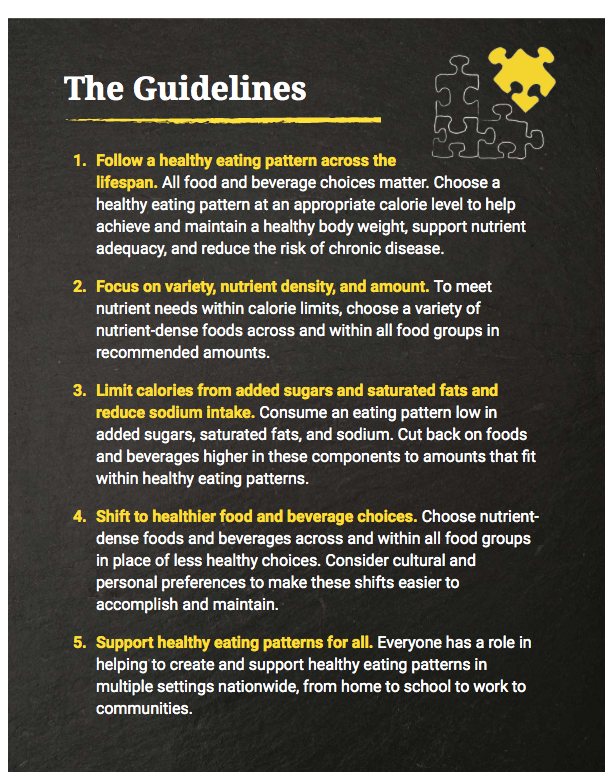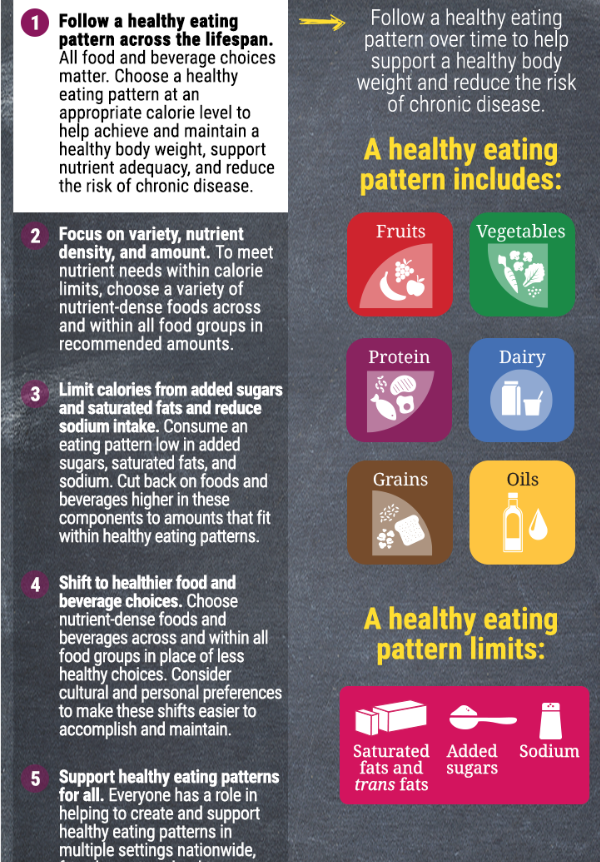The latest edition of the Dietary Guidelines released today suggest Americans should increase consumption of fruits, vegetables, whole grains, nuts and legumes — and that it’s OK to consume as much as five cups of coffee a day.
But they recommend steep reductions in sugary snacks and sodas — no more than 10% of your daily calories should come from sugars — and reductions in saturated fats — also no more than 10% of your daily calorie intake.

And there is a special conclusion that teenage boys and men are actually consuming too much protein and that they should “reduce their overall intake of protein foods” and add more vegetables to their diet.
The guidelines are published every five years by the U.S. Department of Health and Human Services and the U.S. Department of Agriculture and reflect the current body of nutrition science.
The Dietary Guidelines provides recommendations for the general public, as well as policy makers and health professionals and others who reach the public, to help Americans make healthy choices, informed by a thoughtful, critical, and transparent review of the scientific evidence on nutrition. They impact school lunch programs and food assistance programs. And will impact food nutrition labels.
A lifetime of healthy eating helps to prevent chronic diseases like obesity, heart disease, high blood pressure, and Type 2 diabetes.

The guidelines say a healthy eating pattern includes:
* A variety of vegetables: dark green, red and orange, legumes (beans and peas), starchy and other vegetables
* Fruits, especially whole fruit
* Grains, at least half of which are whole grain
* Fat-free or low-fat dairy, including milk, yogurt, cheese, and/or fortified soy beverages
* A variety of protein foods, including seafood, lean meats and poultry, eggs, legumes such as beans and peas, soy products, and nuts and seeds
* Oils from plants: canola, corn, olive, peanut, safflower, soybean, and sunflower oils, as well as nuts, seeds, seafood, olives, and avocados.
Learn more about healthy eating patterns and read the top 10 things you need to know about the Dietary Guidelines to learn more.
Almost 9 in 10 Americans get less than the recommended amount of vegetables. Instead of a whole new way of eating, find new ways to incorporate more veggies to dishes you’re already making. American adults also consume about 50 percent more sodium than the Dietary Guidelines recommends. Use the Nutrition Facts label to check for sodium, especially in processed foods like pizza, pasta dishes, sauces and soups.
Americans may also need to get more physical activity to stay healthy.
For more information for consumers, visit ChooseMyPlate.gov.
From multiple sources, including health.gov






















